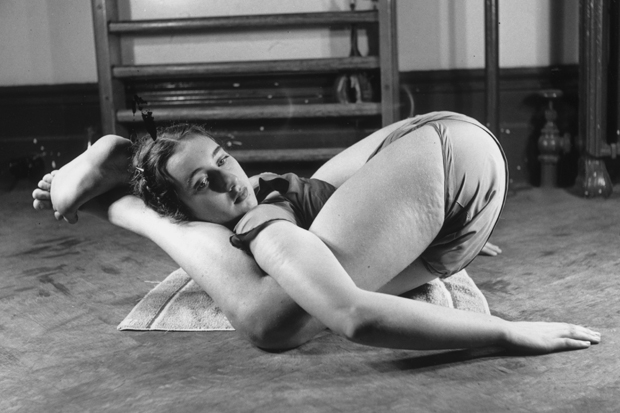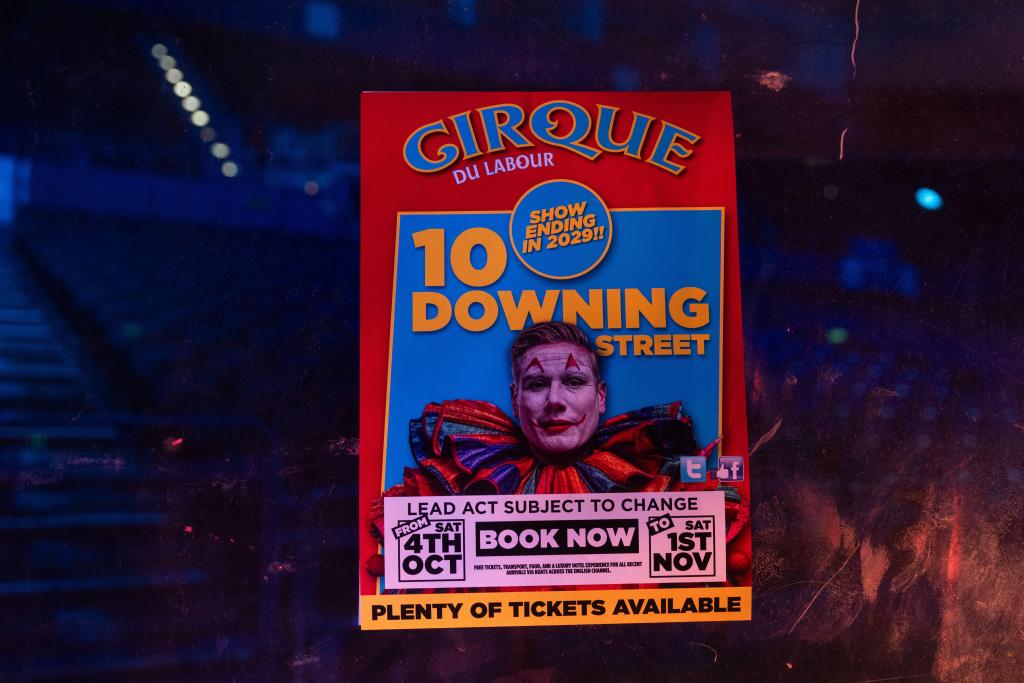Belle Gibson was a publicist’s dream: a ‘wellness guru’ and young mother with a wholesome blonde beauty, a wide white smile, and just enough tattoos to look modern. She had already encountered appalling adversity for one barely into her twenties: in 2009, she revealed, doctors had diagnosed her with malignant brain cancer and told her bluntly: ‘You’re dying. You have six weeks. Four months tops.’
Sickened by two months of chemotherapy and radiotherapy, Gibson said, she had abandoned conventional treatment in favour of a range of holistic treatments, including Ayurvedic medicine and oxygen therapies. She embarked, too, on a gluten-free, refined sugar-free diet which she detailed on her 2013 Instagram blog @healing_belle. There, she announced her intention to continue healing herself from cancer ‘naturally’: it seemed that she had already defied quite astounding medical odds.
The blog became a successful iPhone and iPad food and lifestyle app called The Whole Pantry, which achieved over 300,000 downloads. Publishers excitedly took note, and last December The Whole Pantry book was published in Australia, illustrated with photographs of wholefoods — buckwheat pizza, overflowing bowls of chia seeds — casually but gorgeously displayed in rustic kitchen settings. The publicity described Belle as ‘an inspirational young mother’ who ‘after being diagnosed with terminal brain cancer found herself unsupported by conventional medicine. She began a journey of self-education to treat herself through nutrition.’
Belle’s own introduction to the book contained some dramatic claims. She described growing up ‘in a very dysfunctional home’ with a mother who had multiple sclerosis and an autistic brother. At 12, she said, she moved out and discovered her first vegetable garden. Aged 20, ‘I had a stroke at work’, which led to a ‘diagnosis of malignant brain cancer’. She began to read up on nutrition — ‘one thing that really stayed with me was reading about the detoxification properties of lemons’ — and then ‘pulled myself out of chemo and radiotherapy — my doctors freaked out, but they couldn’t stop me.’ Thereafter, she started ‘empowering myself to save my own life’ (although last July she posted on Instagram the sad news that her cancer had inexorably spread: ‘I have cancer in my blood, spleen, brain, uterus and liver. I am hurting.’) The financial risk in launching The Whole Pantry app was rewarded when an Apple executive chose her app as one of the select few to be featured on the Apple watch.
But there were numerous weevils in The Whole Pantry story, and earlier this month they emerged en masse. Former friends and colleagues began to post sceptical accounts of Belle’s story on Facebook. Fairfax Media started asking serious questions about the ‘inspiring causes’ that Gibson said had profited from the proceeds of her app: several such named charities said they had never seen any money at all. She broke down in an interview with the Australian newspaper, while discussing the July claim that her cancer had spread. Now, Gibson told the interviewer — becoming vague and evasive — this bleak news appeared inaccurate: ‘I would say that it was more of a misdiagnosis than completely fictional.’ She refused to name the doctor responsible. Her story was crumbling: soon no one was sure that she had ever had brain cancer at all, or even of her real age. Soon after, she turned her Instagram account private. Penguin announced that it was suspending publication of the US and UK versions of the Whole Pantry book. Gibson has gone to ground.
Many of the people who so enthusiastically followed Gibson and her progress now feel furious and betrayed. Those in the media who lauded and promoted her have been publicly embarrassed. Elle Australia magazine, which ran a feature last December calling Gibson ‘the most inspiring woman you’ve met this year’, regretfully reflected on its encounter with her. Yet Lauren Sams, a writer on Cosmopolitan magazine, which had given her its ‘Fun Fearless Female’ award, expressed disbelief that anyone should criticise Penguin for not fact-checking Gibson’s story: ‘But why would they? I certainly wouldn’t, if I was in their position. Cancer is so all-consuming, so catastrophic, so final, that to question anyone’s diagnosis would just be downright evil.’
But would it really have been ‘downright evil’ to have asked for some more information on Gibson’s initial condition, or politely to request an interview with the doctors who were allegedly distraught when she first came off chemotherapy? If Gibson’s story had been published in a scientific journal, such questions would have been obligatory. Even in a newspaper article, some basic fact-checking and use of additional sources would have been expected. The real problem lay in the fact that Gibson’s story originated elsewhere, in a blog that quickly became part of the global ‘wellness industry’, a fast-growing business empire which runs partly on the free-flowing fuel of faith, assertion and anecdote, where words such as ‘inspiration’ and ‘empowerment’ recur frequently, and where blunt, evidence-based questions are often instinctively discouraged.
The peculiar, hazy rules of this industry — where lifestyle and diet meet health — are illustrated by its responses to Gibson’s serial claims. On the one hand, she impressed followers with the apparent triumph of her decision to heal herself through alternative therapies and diet. Yet Gibson’s sudden revelation last July that cancer had in fact spread throughout her body seemingly caused no one in the publishing industry to re-evaluate her claims, or even to pause and advise that this seriously ill young mother should urgently return to seek the help of the medical establishment. It is hard to know which template her promoters had in mind for Gibson: was she a genuine ‘medical miracle’ whose ‘detoxifying’ lifestyle had achieved results that defied scientific predictions, or an ‘inspirational’ campaigner and fundraiser whose public struggle against cancer nonetheless appeared doomed? So long as her Raw Chocolate Nutbutter Cups sold, it didn’t really seem to matter which.
Some commentators in Australia have noted similarities between Gibson’s story and that of the Melbourne woman Jess Ainscough, who died in February of a rare and aggressive form of cancer called epithelioid sarcoma. Ainscough was 22 when diagnosed, and decided to reject conventional treatments and her doctor’s advice to amputate her arm including the shoulder — a terrifying prospect for anyone, and perhaps even more so for a strikingly attractive young woman. Instead, she pursued alternative methods which included Gerson Therapy, a treatment partly based on raw juices and coffee enemas. Ainscough’s blog, The Wellness Warrior, attracted a large public following. Her life became a rigorous, punishing schedule of juicing, enemas, yoga, meditation and blogging in order to ‘bring my body to optimum health so that it can heal itself’. On her blog, she wrote that she saw herself as ‘part of an empowering wellness revolution, sweeping the planet’.
In 2012 Ainscough’s mother Sharyn was diagnosed with breast cancer, and she too followed Gerson Therapy until her death in 2013. Ainscough suffered an intensification of her own symptoms, until last December she announced that she had returned to conventional treatments. It proved too late. Dr David Gorski, an American oncologist, wrote sadly on his blog Science-Based Medicine: ‘Jessica Ainscough had one shot, a good shot’ — the agonising decision of an early shoulder amputation — but ‘she didn’t take her first shot’. He concluded that ‘Jess Ainscough was also a victim of the very pseudoscience that she promoted.’
The ‘wellness industry’, of course, covers a broad field, from health supplements to spa treatments, diet regimes to holiday retreats. In its more down-to-earth aspects, there is no reason why much of it cannot work in tandem with conventional medicine. Few doctors would deny that diet and behaviour have an important influence on health: both obesity and smoking, for example, are known to raise the risk of certain cancers. But so, too, do some genetic factors, and other triggers presently beyond medical analysis or control. Doctors must often deal in statistics and probabilities rather than certainties, not least because cancers themselves can be unpredictable.
The more extreme manifestations of ‘wellness’ theory, however, can take on some cultish aspects, including a deep distrust of conventional medicine combined with an irrational conviction that recovery from disease is chiefly a matter of willpower and dietary self-discipline. At its best, this can be misleading; at its worst, it is to blame for encouraging understandably frightened people to shun hospital treatments that have a respectable chance of helping them.
The UK journalists who wrote wittily and poignantly in the late 1990s about cancer and its treatment — most notably Ruth Picardie in the Observer and John Diamond in the Times — did a great deal to demystify the disease, while making their readers acutely aware of the thrill and preciousness of life. Yet Diamond, in particular, was very hard on the popular language of ‘battlers’ and ‘warriors’, saying: ‘I despise the set of warlike metaphors that so many apply to cancer.’ The reason, he said, stemmed from ‘a hatred for the sort of morality which says that only those who fight hard against their cancer survive it, or deserve to survive it — the corollary being that those who lose the fight deserved to do so.’
I wonder what Diamond would have made of Belle Gibson, who spoke the fashionable language of battle with fluent and apparently fraudulent ease, and is now hiding — along with her young son — from an angry army of former believers. Her falsehoods, if that’s what they are, were deeply culpable, and yet perhaps we should also look at those who so vigorously promoted them while suspending their own critical faculties. Sometimes one can even muster a stray flash of sympathy for Gibson, trapped in the big, runaway lie that everyone seemed to love.








Comments